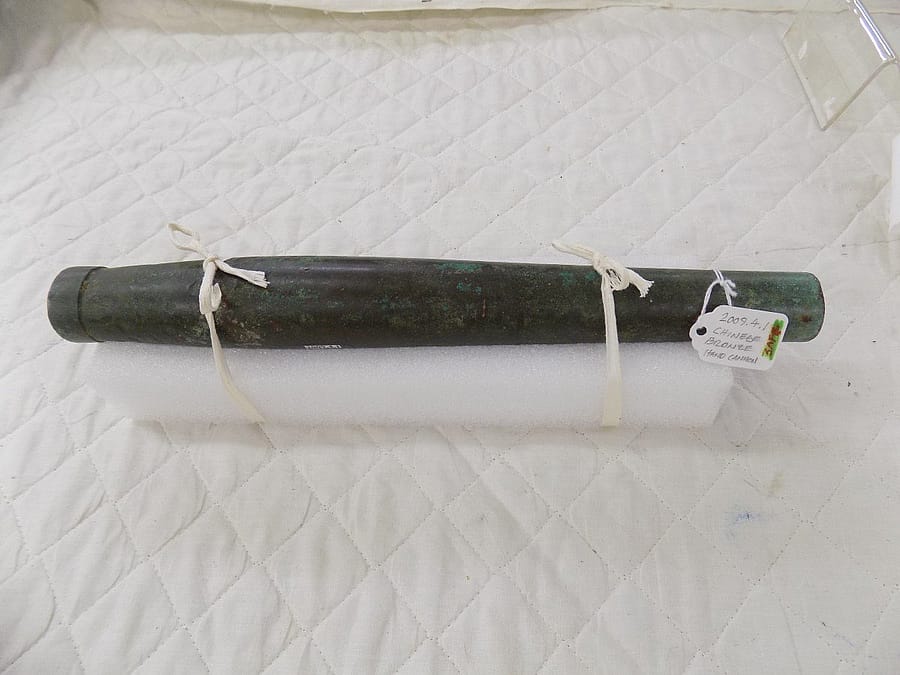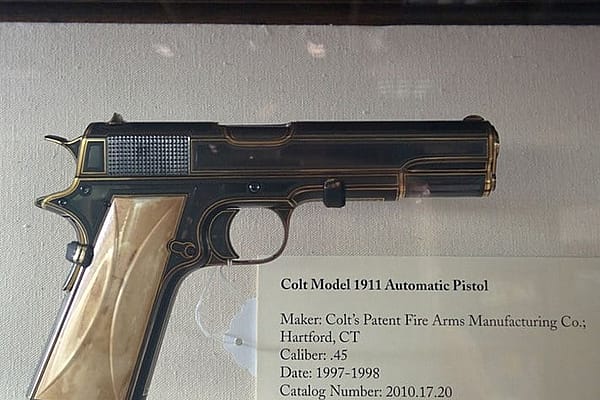
Early Ammunition Development
Ammunition is the most important element required for advances in firearms development. Many of the leaps in firearms development were attempted and failed pending advances in ammunition technology. This post will be a highlight the history of ammunition in a broad sense focusing on the early development of black powder and corresponding firearms development.
Gunpowder or as it is more commonly know these days as black powder traces its origins to China in the 10th and 11th century. Early black powder increased the lethality of arrows and lances as an incendiary device. Later development brought about the creation of primitive hand grenades and rockets. Insufficient quantities of nitrates caused early black powder to generate more flame and lacked explosive potential. However when lashed to an arrow or in a fire lance it made for an effective incendiary weapon. Early mixtures of black powder were 1 to 1 to 1 ratios of nitrates, charcoal and sulfur. The exact composition of black powder depends on the end usage. Black powder mixtures were experimented with until the ideal mix was found of 75 parts nitrates, 15 parts charcoal and 10 parts sulfur.
As the quality of powder improved the explosive potential of it improved as well. The later developments of bombs were quite devastating in the warfare of the era. Earlier bombs has just used a ceramic casing and functioned as a primitive hand grenade. These become known as thunderclap bombs and were a shock when they showed up on Chinese battlefields. While dangerous the thunderclap bombs paled in comparison to the later irons bombs thrown by catapult as a siege weapon. Early fire lances were just a spear with a bamboo tube to serve as a barrel lashed to it. The tube would be loaded with a black powder charge and some kind of shrapnel such as broken pottery shards. The effective range of the fire lance was quite short. Metal tubes displaced bamboo as the preferred mounting for fire lances. The metal tubes were much sturdier when facing the higher pressures of improved black powder. This is also when the Chinese started to develop proper projectiles that matched the bore of the tube. This lead to the creation of hand cannons, matchlocks and small artillery cannons. Knowledge of black powder spread from ancient Chine across Asia, the Middle East and Europe.
The Opus Majus written by Roger Bacon contains the first recorded mentions of black powder in Europe in the 13th century. The earliest mention of a firearm comes in the 14th century. Development of black powder and firearms progressed rapidly in Europe. Serpentine was the name in Europe for black powder. Black powder was considered to be demonic for a period of time after its arrival in Europe. Old depictions of powder makers featured little devils in the background.
The substance was a finely ground powder mixture of saltpeter, charcoal and sulfur of a similar consistency to talcum powder. It was hazardous to make and difficult to use. The three elements were ground separately and then mixed together dry. Remixing by hand in the field was required due to serpentine’s propensity to separate during shipping. This was obviously difficult to do in combat and dangerous with all the open flames around that could ignite aerosolized powder. Loading cannons of the period with serpentine required carefully managing the powder. When serpentine was compacted too thoroughly it wouldn’t burn well and could fizzle. Loaded too loose could lead to sharp pressure spikes potentially rupturing the barrel.
Corned powder was the next advance in black powder production and refinement. Corned powder including the mixing of liquid to act as a medium to hold the powder together producing a slurry. The resultant slurry could be processed more safely than serpentine powder and resisted separation during shipping. Large molds were used to the dry the slurry after it was poured in. Depending on the intended purpose the gunpowder slab could be ground to different coarseness. The larger the diameter of the bore the coarser the grind of powder in essence. Cannons were bronze and later made from iron and bore size would increase dramatically to take advantage of the increased power presented by corned powder. By the end of the 14th century European bombards could fire a stone ball that weighed 400+ pounds. This period would also see the advance from matchlocks to wheellocks and flintlocks. All of these firearms and artillery shared a prominent feature. They are muzzle loading with ammunition consisting of loose ball and powder. Each iteration of these firearms provided marginal improvements due to the limitations of the ammunition technology of the era.
Written By
Kyle Hestand
Kyle Hestand is an intern at the Cody Firearms Museum from Louisville Kentucky where he is finishing his BA in History at the University of Louisville. At the CFM he will be answering records inquires, planning tours and performing research. His interests include not sneezing on the firearms, American and Russian history, and spoiling his dog.















